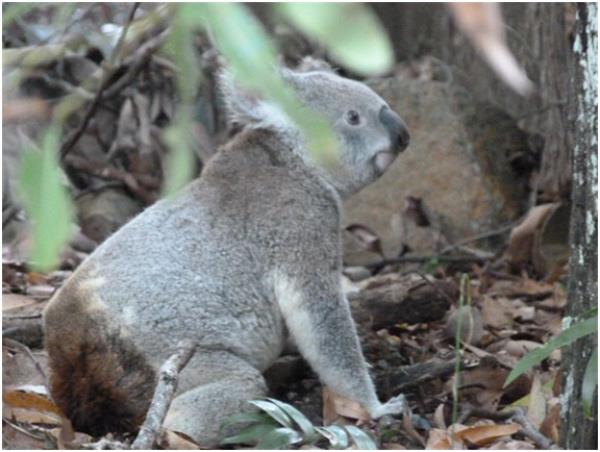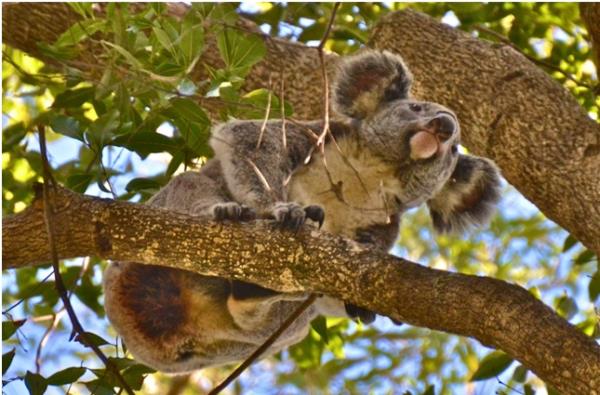
By ALEX HARRIS
NOOSA Today is proud to present the first instalment of the monthly Koala Tracker column. The column is supplies by Koala Tracker creator and Noosa local Alex Harris.
THIS month Koala Tracker creator Alex Harris writes to inform Noosa Today readers of the local koala issues along with a desperate plea to help locate three very sick koalas living in Noosa Heads.
Noosa is blessed with a koala population, but not all are as healthy as they need to be in order to sustain their numbers.
While some diseases are visible, others are more subtle. While some, such as renal disease or leukaemia, can be completely hidden.
The Noosa National Park (the headland between Little Cove and Sunshine Beach) has proved to be a significant disease hotspot. Specifically we have had a high number of koala deaths from chlamydiosis, cystitis, leukaemia, reproductive and other tumours from this area alone.
We can play a critical role in localised conservation by being observant of our koala population. Map every sighting on www.KoalaTracker as soon as you can after sighting, with photos wherever possible, and note whether it appears healthy, or has potential illness.
WE NEED YOUR HELP
There are currently three very sick koalas in the Noosa Heads area we are keen to locate.
One has a serious case of dirty tail, and has been sighted between Viridian stairs, The lookout, Bayview Road and the Noosa National Park. The sick koala was first sighted by formula one racing driver Mark Webber at the top of Bayview a year ago. It has been sighted multiple times since but the reports made to KoalaTracker are always a week or more after sighting, which makes it near impossible for rescuers to find, as koalas are often only in one spot for a day before they have to move on to find more food.
The second is a small koala who lives between Settlers Cove, Pinaroo Park and the trees behind the Coles loading bay at the back of unit blocks on Wyandra Street, Noosa Junction who has not been reported since being seen crossing Cooyar Street a couple of months ago.
And there appears to be a third koala with dirty tail, sighted several times around Tea Tree Bay and the car park in the Noosa National Park.
It is extremely important that if you see a koala with any of these symptoms, you call one of the emergency wildlife numbers.
Don’t forget to map the location of the koala on www.koalatracker.com.au in addition to calling for rescue.
Contacts Sunshine Coast Koala Rescue on 0423 618 740, or Australia Zoo Wildlife Hospital Emergency on 1300 369 652.
WHAT ARE THE DANGERS
Chlamydia is a sexually transmitted bacterial infection that can also be transmitted to offspring in birth. There are various strains, and koalas can be infected with multiple strains at the same time. The most harmful of the Chlamydia strains causes blindness, infertility, and death. Other strains are linked to conjunctivitis and urinary tract infections, respiratory infections and common pneumonia symptoms. Less obvious but more lethal are reproductive infections that can cause infertility in females, and death if it spreads past the cervix into the uterus.
WHAT SHOULD YOU LOOK OUT FOR
Visible symptoms of which the public needs to be aware are signs of conjunctivitis, urinary tract infections, and pneumonia. If the koala has pneumonia, clinical symptoms include sore chest or difficulty breathing.
Urinary tract infections cause incontinence, which leads to the condition called ‘dirty tail’ or ‘wet bottom’.
THE GOOD NEWS
The research team at the University of the Sunshine Coast is developing a vaccine for koala chlamydiosis. Professor of microbiology, Peter Timms, says field trials have gone extremely well.
Professor Peter Timms, wildlife vet at Australia Zoo Wildlife Hospital Dr Amber Gillett, and Koala Tracker creator and Ray White Noosa River agent Alex Harris, will share the stage at USC’s Imaginarium Day, Sunday, 10 August.







